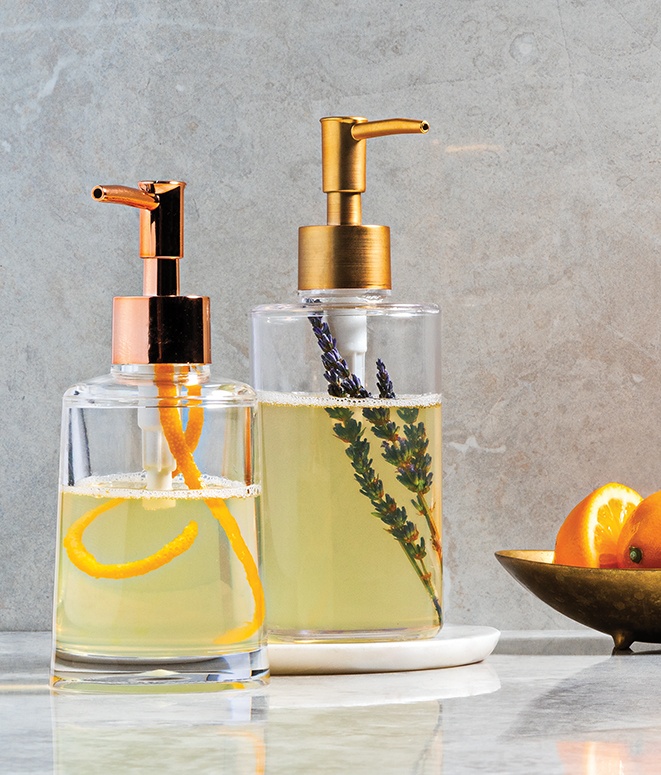BY SARA JOHNSON
Not only beneficial for cooking food, the precision of sous-vide can also aid in homemade soapmaking. At Cuisine Solutions’ Sterling, Va., headquarters, Chef Andrew Lisnoff took it upon himself to create a custom sous-vide liquid soap. “The two main advantages to cooking soap using the sous-vide method are keeping the temperature at the correct point with almost no variation, and the convenience of not having to stir the product multiple times throughout the cook,” Lisnoff says. Read on to get Lisnoff’s tips for the process, then give his sous-vide soap recipe a try for yourself.
![]()
GATHER YOUR EQUIPMENT
Before starting any soap making, first assemble all of your tools and personal protective gear. Although the end result is safe for your skin, some of the ingredients used to make soap are not. Lisnoff recommends wearing safety goggles and gloves, and acquiring a slow-cooker, a thermometer, a pitcher, a potato masher, a sheet pan, and a stick blender that will be used exclusively for soap making and not for preparing food.
![]()
UNDERSTAND YOUR CHEMICALS
With each batch, you’ll need to calculate the ratio of oil and lye to achieve a safe-to-use soap. Head online to find a calculator based on your types of oils and the quantity of soap you are producing. Lisnoff’s recipe also calls for adding a boric acid mixture to neutralize the soap. “It’ll bring the pH to the appropriate 9–10 where soap should be,” Lisnoff says.
![]()
CHOOSE YOUR OIL
The process of mixing a fat with lye to produce soap is called saponification. A variety of oils can be used for this process, from olive oil to coconut oil. Lisnoff uses a combination of coconut oil and sunflower oil. Lisnoff’s recipe calls for heating the oils to 160°F (71.1°C) before adding the lye. “Saponification occurs very shortly after I add the lye to the oils,” Lisnoff says.
![]()
PICK A SCENT
Although completed soap doesn’t need a scent to be effective, adding essential oils to the unscented mixture is a natural way to infuse soap with a personal touch. Lisnoff recommends using jasmine flower or Meyer lemon oils, or mixing together combinations of vanilla, lavender, coconut, and warm ginger.

MAKE YOUR SOAP!
Now that you’ve leaned the ropes, it’s time to make that soap. Find the recipe HERE.
Related Articles VIEW ALL ARTICLES
Tips & Techniques
Getting Started with Sous Vide
Trying sous vide cooking for the first time? Get the scoop on how to do it right with helpful tips from the chefs at Cuisine Solutions, the world-renowned experts in the sous vide method.
Read More >Tips & Techniques
Shortcut Success
No time to cook? Turn a weekend of sous vide cooking into a week of always fresh-tasting, quickly reheated meals.
Read More >Tips & Techniques
A Guide to Sous Vide Sauces
Every home chef should count these sous vide sauces among their kitchen secrets.
Read More >
